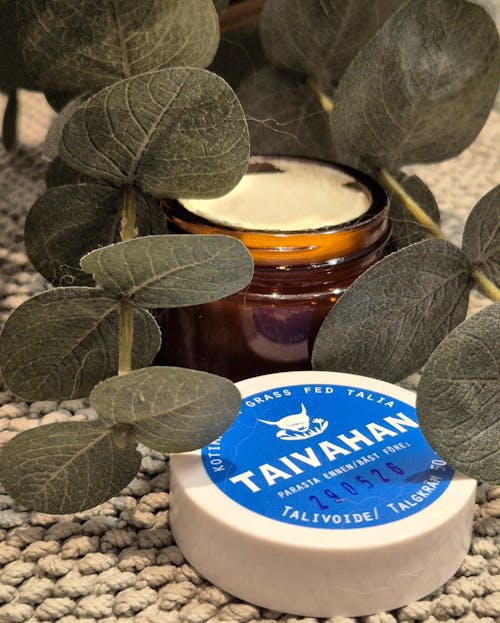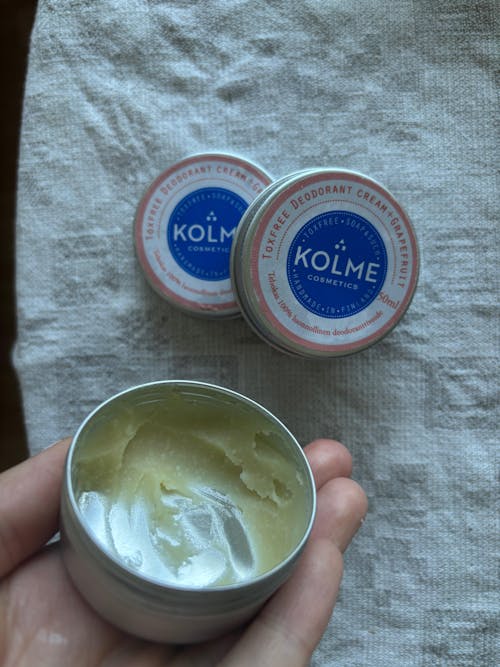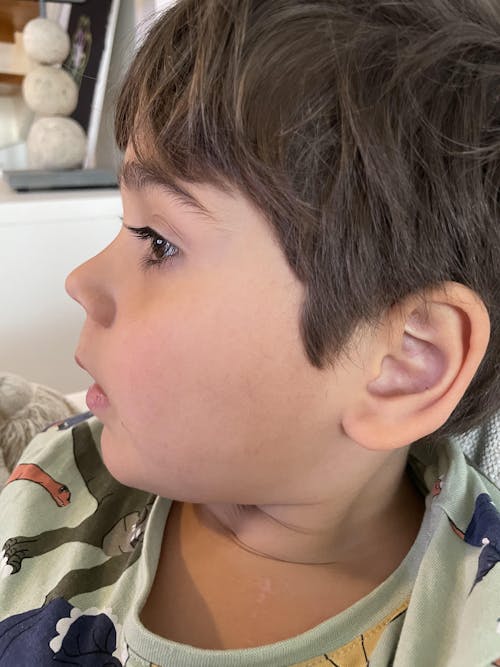How to distinguish between atopic dermatitis and TSW skin (i.e. addiction caused by cortisone cream treatment)?
Posted by Hanna-Kaisa Kalliomäki on
Hey!
My name is Hanna-Kaisa and I'm writing here about my own experiences! I've been going through TSW for almost two years, shared my skin story several times on social media, and through it I've been able to help dozens of other people with skin problems so far. And what's best - I've received incredibly wonderful feedback and praise. A few who started detoxification after me have already completely recovered. That's why sharing your own story feels even more meaningful! You can read my previously published healing story here.
When Hanna from Kolme Cosmetics asked if I would help with this new blog post, of course I immediately agreed! 😊
What is TSW and TSA all about?
Topical Steroid Withdrawal is a widely misunderstood medical condition. TSA, or Topical Steroid Addiction, describes this condition perhaps even better, because it is about the body being addicted to medicated fats (cortisone and/or protopic/limousine creams). TSA often has similar symptoms to common skin diseases and is therefore often diagnosed as aggravated atopy or impetigo. The challenging thing is that the symptoms of TSW skin resemble the original skin disease for which the cortisone cream is prescribed.
TSW is officially the term for cortisone withdrawal, but I'm also talking about limosone creams here, because they cause the same – even more severe – symptoms and I personally have experience using both.
Signs of addiction can include the appearance of a red rash, especially on the face, severe itching, pimple-like itchy spots, dry skin and flaking. The rash often appears in patches, but may also take over whole areas of skin — usually even those that have not been applied creams. In order to control the symptoms, stronger creams are often prescribed, which worsens the addiction.
The disease and symptoms are individual
The factors leading to addiction are individual. Most patients with TSA have used moderate to strong cortisones for several months or years, but others may develop an addiction after just a couple of weeks of use—even with mild, over-the-counter creams.
Addiction may develop even if the treated area is only the size of one finger. Topical steroid addiction has also been found in people who have not washed their hands after helping to apply cream to the skin of an eczema patient. The background does not necessarily have to be an atopic skin disease, but TSW symptoms have also been experienced by people who have had a cortisone spike placed in their shoulder, who have taken cortisone tablets orally or used cortisone-containing eye drops.
Addiction symptoms usually appear either during treatment or when the number of uses is reduced, but the strongest symptoms occur when stopping medicated fats or after a longer break.
Many, including myself, have heard from doctors that cortisone creams only tend to cause thinning of the skin or a burning sensation after applying Protopic cream. So how is it possible that the spectrum of symptoms of addiction and withdrawal is so broad?
However, in prolonged cream treatment, the synthetic hormone (cortisone) gets into the blood to an increasing extent, so the local treatment gradually becomes systemic. The body gets used to the regular application times, and the cream is no longer effective, in which case the strength of the creams must be increased to control the symptoms. When the external steroid hormone replaces the natural hormone production, the body is no longer able to regulate its stress response by itself, and the cream treatment cannot be stopped without worsening of the symptoms.
How do you recognize the symptoms of TSW?
Experiences vary a lot. Usually not everyone has all the symptoms, but more than one. The symptoms also vary in different parts of the body. Others may have strong reactions in their hands and feet. On the other hand, the worst symptoms are in the face area and e.g. the legs have almost no symptoms at all. TSW is a long process that may take months or years. During the healing process, very different symptoms may occur. Some last longer, others wear off within the first weeks or months.
Early signs of TSW can include:
- Mild, atopic dermatitis-like symptoms
- Pimple-like, itchy pimples
- Spots that collect liquid
- Reddened patches with clear borders
- Skin burning sensation
- Intense itching
- The spread of the rash to new areas where there was no atopic rash before
- Recurrent eye infections/stye
- Swelling and fluid retention
- Pigment changes
- Leakage of tissue fluid from the skin
- The skin flares up really red and may still calm down with medicated ointments, but after a momentary relief the symptoms return and start getting worse time after time.

At the beginning of weaning, most people have a clearly demarcated red area on their chest, others immediately, for me 2 months after starting weaning.

Hypersensitivity reaction during TSW
Clear signs of TSW
- Severe swelling of the eyes
- Red "sleeves" or "legs"
- A "mirror image" red rash on both sides of the body
- Insomnia
- Pigment changes
- Pigmentation changes that do not tan
- Red, burning, cracked and oozing skin
- Hair loss
- Flashes like an electric shock
- Thermoregulation and nervous system problems
- Profuse smelly perspiration
- Fatigue
- Disorders of the menstrual cycle
- Changes in appetite
- Bone-deep itching
- Thickening of the skin, "elephant skin"
- Severe peeling of the skin
- Stomach problems

Red rash sleeves are typical for TSW skin

The skin was like silk paper and leaked tissue fluid easily.

Especially in the beginning, the face and eyes swell and the skin scales heavily.
Mitä kannattaa tehdä ja mitä ei kun iho on pahimmassa vaiheessa?
TSW, eli vieroittumisprosessi on rankkaa ja välillä kivuliastakin, joten tästä epämukavasta matkasta kannattaa yrittää tehdä itselleen mahdollisimman mukava. Joillekin toimii parhaitan se, että jättää kaikki ihonhoitotuotteet pois ja joillekin se ei toimi ollenkaan. Myös eri TSW:n vaiheissa saattaa toimia eri jutut. Kehoa kuuntelemalla ja kokeilemalla selviää, mikä toimii itselle.
Niksit, jotka auttoivat omaa oloa:
Oma iho ei kestänyt suihkua ja kastelua lainkaan pahimmassa vaiheessa, vaan se tuntui kuin joku olisi heittänyt happoa iholle. Siksi kävin useamman kuukauden ajan vain harvakseltaan kokovartalosuihkussa ja pesemässä hiukset. Toisille taas suihkut ja (suola)kylvyt ovat ainoa paikka, missä on hyvä olla ja kutina häviää.
Pahimpina aikoina koin myös, että vaikka laitoin iholle hyviä ja luontaisia tuotteita, niin lähes välittömästi lehahdin punaiseksi ja alkoi jäätävä kutina. Siksi olin useita kuukausia käyttämättä ihonhoitotuotteita. TSW-oireiden lievennyttyä olen uskaltanut kokeilla ihon kosteutukseen tuotteita ja löytänyt muutaman luottotuotteen, joita käytän. Esimerkiksi Kolme Cosmeticsin minimalistisen ainesosaluettelon omaava Kehäkukkavoide on yksi näistä!
En kuitenkaan vieläkään kosteuta ja rasvaa ihoa päivittäin. Olen pian käynyt tätä vieroitusmatkaa kaksi vuotta ja iho myös pärjää ilman rasvausta eikä tunnu kuivalta ja kiristävältä kuten ennen. Tämä on iso muutos! Toisilla taas jatkuva päivittäinen rasvaaminen on ihan ehdoton juttu TSW:n alusta alkaen ja se helpottaa olemista eikä aiheuta lehahduksia. Tässäkin kokeilemalla selviää se itselle paras ratkaisu.
0 comments
















